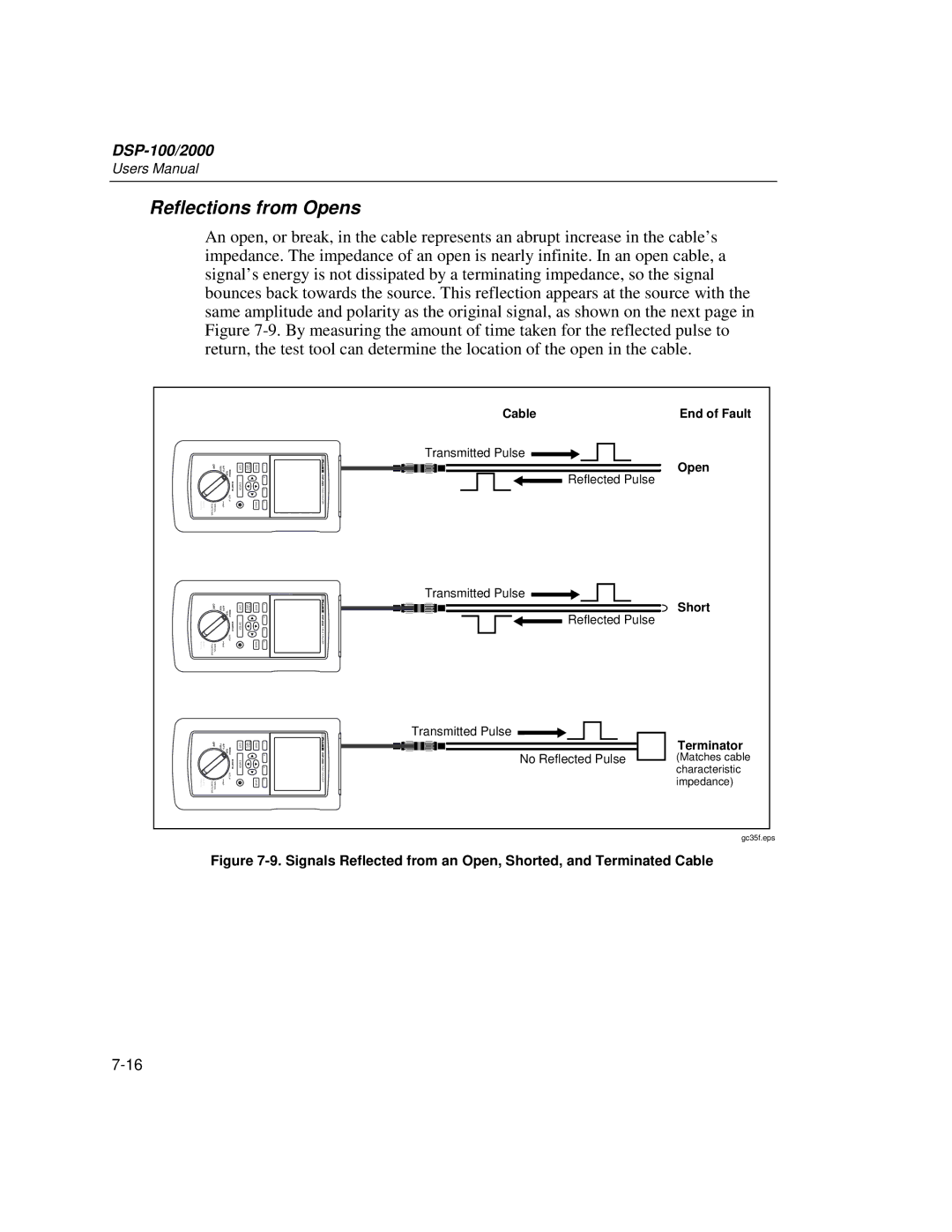
DSP-100/2000
Users Manual
Reflections from Opens
An open, or break, in the cable represents an abrupt increase in the cable’s impedance. The impedance of an open is nearly infinite. In an open cable, a signal’s energy is not dissipated by a terminating impedance, so the signal bounces back towards the source. This reflection appears at the source with the same amplitude and polarity as the original signal, as shown on the next page in Figure
| OFF | AUTO TEST | TEST | SINGLE | EXIT | FAULT INFO | TEST | 12 | DSP |
|
|
|
| MONITOR | ENTER |
|
| 3 | |
SMART REMOTE | SPECIAL FUNCTIONS |
| SETUP |
|
| SAVE | 4 | ANALYZER |
| OFF | AUTO TEST | TEST | SINGLE | EXIT | FAULT INFO | TEST | 12 | DSP |
|
|
|
| MONITOR | ENTER |
|
| 3 | |
SMART REMOTE | SPECIAL FUNCTIONS |
| SETUP |
|
| SAVE | 4 | ANALYZER |
Cable | End of Fault |
Transmitted Pulse
Open
Reflected Pulse
Transmitted Pulse
Short
Reflected Pulse
| OFF | AUTO TEST | TEST | SINGLE | EXIT | FAULT INFO | TEST | 12 | DSP |
|
|
|
| MONITOR | ENTER |
|
| 3 | |
SMART REMOTE | SPECIAL FUNCTIONS |
| SETUP |
|
| SAVE | 4 | ANALYZER |
Transmitted Pulse ![]()
No Reflected Pulse
Terminator
(Matches cable characteristic impedance)
gc35f.eps
